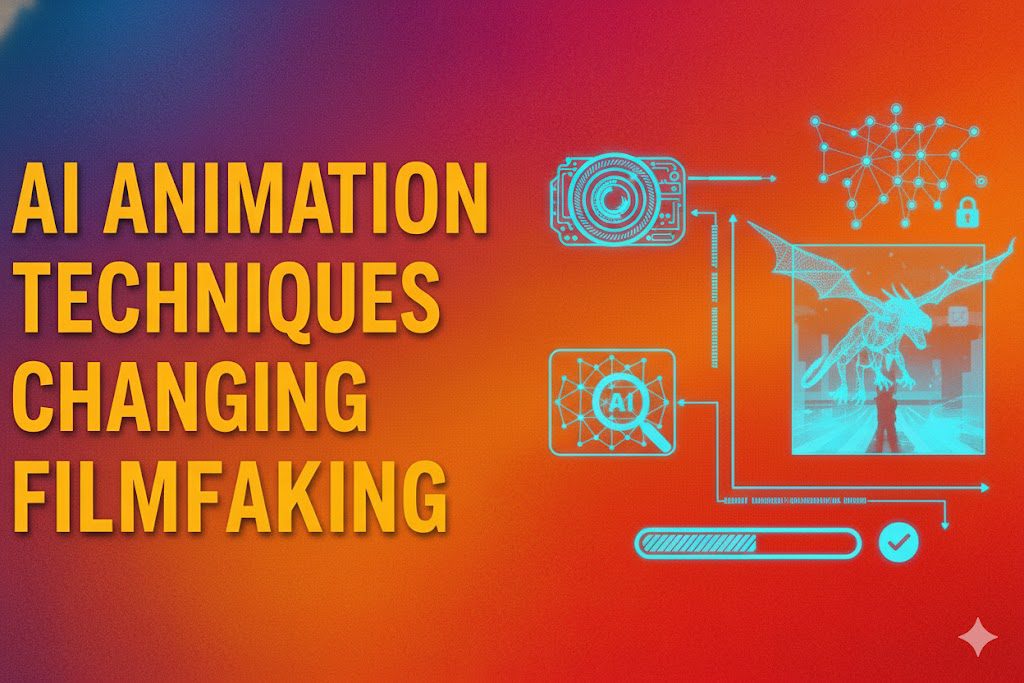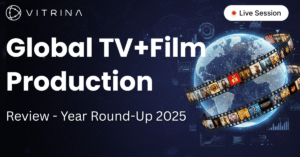The 5 AI Animation Techniques Changing Filmmaking in 2025: A Strategic Guide

Introduction
The shift toward AI-powered production is no longer a technology forecast; it is the present operating environment for Media & Entertainment executives.
To remain competitive in a market expected to grow at a CAGR of 27.8% through 2029, decision-makers must strategically adopt the 5 AI Animation Techniques Changing Filmmaking in 2025.
These innovations are fundamentally lowering the barrier to entry, increasing creative iteration speed, and delivering significant cost savings across the pipeline.
For content acquisition and production leaders, the critical task is identifying which vendors possess verified, scaled proficiency in these new workflows, moving past the common issue of fragmented market intelligence.
Key Takeaways
| Core Challenge | Fragmented data makes it difficult to vet the long-term viability and proven capabilities of vendors claiming expertise in AI animation. |
| Strategic Solution | Adopt a strategic framework that evaluates partners based on their demonstrated proficiency in the five core AI techniques and resultant operational ROI. |
| Vitrina’s Role | Vitrina provides the verified, global supply chain intelligence to discover, profile, and track animation and VFX companies successfully mastering and implementing these AI techniques. |
The Strategic Imperative: Mastering AI for Production Agility
The industry shift is driven by the mandate to produce high-fidelity content faster and cheaper.
Firms that have become early adopters of Generative AI (GenAI) report that these tools have already supported the reduction or consolidation of job functions, indicating tangible efficiency gains.
For the executive, this means moving beyond general interest in AI to a focused search for partners who can deliver a verifiable return on investment (ROI).
Critically, AI tools are reported to reduce pre-production budgets by up to 40%, directly translating a technological advantage into financial de-risking.
To capture these gains, I recommend a strategy that is built on understanding the specific impact of the 5 AI Animation Techniques Changing Filmmaking in 2025.
The 5 AI Animation Techniques Rewriting the Workflow
The five most disruptive AI animation techniques can be grouped into three strategic themes: Pre-production De-risking, Real-Time Production, and Scalable Content Manufacturing.
1. Pre-production De-risking
The first technique, Generative Pre-visualization (Script-to-Scene), uses Large Language Models and diffusion algorithms to instantly convert script concepts into visual storyboards and animatics.
This dramatically accelerates creative alignment, allowing directors and stakeholders to iterate on multiple story and camera approaches within hours, rather than weeks of manual sketching and modeling.
The resulting pre-vis offers immediate visual feedback and significantly reduces the capital burn during the initial development phase.
2. Real-Time Production and Efficiency
Two techniques are converging to redefine the production floor: Real-time Virtual Production & Rendering and Vision-Based (Markerless) Motion Capture.
Real-time rendering, powered by AI-based render engines, generates final-quality visuals almost instantaneously, providing interactive camera and lighting control during filming, thereby saving on location costs and iteration time.
Concurrently, Markerless Motion Capture utilizes computer vision to track human movement from standard video footage, eliminating the need for expensive physical sensors and speeding up data post-processing.
This democratization of high-fidelity performance expands the pool of vendors capable of delivering believable character animation.
3. Scalable Content Manufacturing
The final two techniques enable content scale and speed. Text-to-Video/Image-to-Video Diffusion models (like Sora and Veo) allow for the rapid creation of hyper-realistic video sequences and environments from simple text prompts, turning content creation into a manufacturing process.
This capability is essential for personalizing content across cultural markets. Complementing this is AI-Enhanced Post-Production (VFX Automation), where machine learning automates heavy-lifting tasks like rotoscoping, object tracking, and realistic simulation generation, cutting down weeks of manual work into days. This forces a talent shift, transforming traditional VFX compositors into AI-proficient creative directors.
From Hype to ROI: Vetting Vendor Capability
When sourcing partners, executives must move past generic claims and demand proof of ROI for these techniques.
The key risk lies in partnering with firms that merely use an AI tool versus those who have integrated it into a restructured workflow, offering compressed schedules and competitive bids.
You must rigorously vet their IP and licensing protocols, as ethical and legal concerns around data sourcing and content authenticity remain high.
Furthermore, inquire about the vendor’s proprietary solutions for maintaining visual consistency across long-form projects, a noted technical challenge for current GenAI models.
A capable partner will demonstrate how they blend human creative oversight (e.g., prompt engineering) with machine precision to overcome these technical limitations.
Visibility is the Foundation of an AI Strategy
Navigating this rapidly evolving vendor landscape requires a data platform specifically designed for the M&E supply chain.
Vitrina is the global leader in tracking the entertainment supply chain—film and TV content, projects, companies, collaborations and decision-makers.
Our platform allows you to transform vendor discovery from a manual process to an efficient strategic exercise by providing verified intelligence on partners who have demonstrably utilized these advanced techniques.
Our system tracks a company’s Project Footprint, provides Verified Company Profiling including scale and deal track record, and maps Executive Intelligence to connect you with the specific leaders driving AI adoption.
This visibility is essential for mitigating risk and securing the most technically advanced partners globally.
Conclusion: The Future is a Hybrid Workflow
The strategic takeaway from the rise of the 5 AI Animation Techniques Changing Filmmaking in 2025 is the need to embrace a hybrid workflow.
Human creativity sets the vision, and machine intelligence handles the technical execution with superior speed and cost-efficiency.
The executives who lead this transformation will not only reduce content COGS but will also gain the creative agility required for the age of scaled, personalized content.
The immediate priority is establishing a data-centric framework for partner evaluation—a necessity that secures a competitive edge and de-risks future production investments.
Frequently Asked Questions
AI is not expected to replace human creativity, but rather to shift roles into “tech-creative hybrids”. Professionals will focus on artistic direction and refinement, while AI automates repetitive technical tasks.
AI can significantly cut costs and time, with reports indicating it can reduce pre-production budgets by up to 40% and decrease the time required for heavy-lifting VFX tasks by approximately 50%.
The primary concerns center on intellectual property rights, job displacement, and the need for transparency regarding the training data used by AI models. Executives must establish clear policies to mitigate risks related to copyright and content authenticity.
Commonly adopted tools include powerful Text-to-Video models like Sora and Luma, as well as vision-based motion capture software like Rokoko Vision, which are being integrated into existing production suites.

























